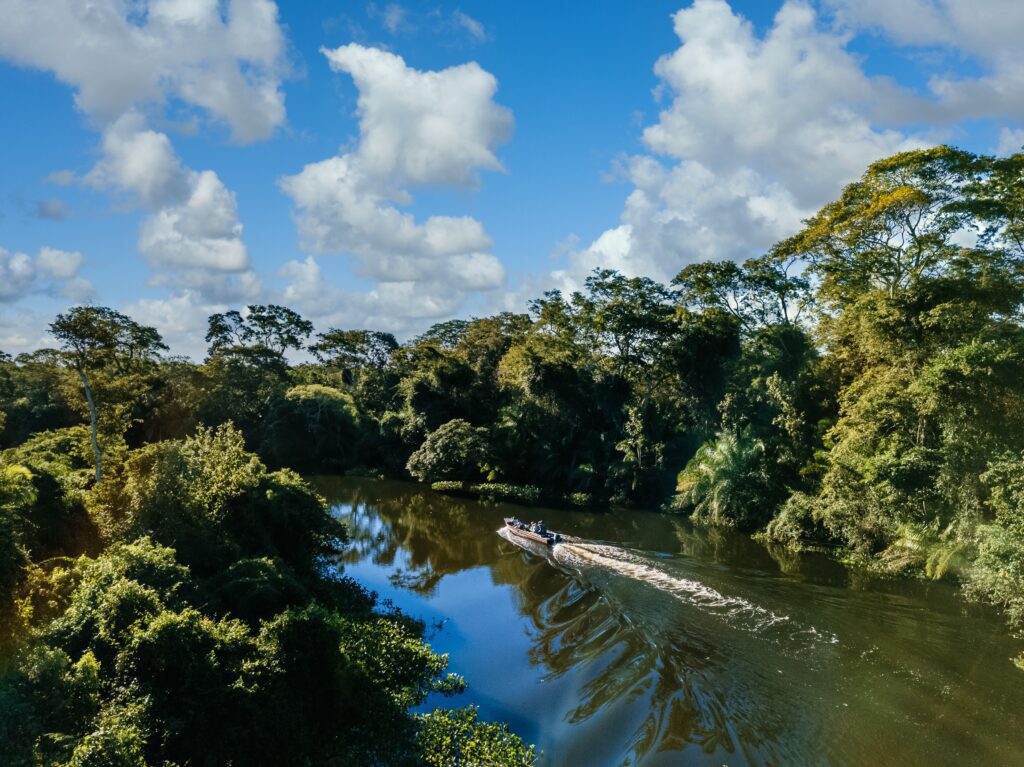by Luiz Felipe Moura, coordinator of the Amazon Science Museum (MuCA)
The upcoming COP30 represents much more than a global summit on climate change: it is a historic opportunity to show the world how the Amazon can lead the way in sustainable solutions, grounded in knowledge, innovation, and local empowerment. And it is with this spirit that the Amazon Science Museum (MuCA), based in Belterra, has been establishing itself as one of the strategic hubs of the conference’s decentralized program.
In recent months, we’ve taken important steps. We welcomed the National Sebrae Mission to our headquarters, which toured the tourist circuit set to host delegations from around the world during COP30. But this route is more than a showcase of attractions – it’s a deep dive into a living Amazon, where science, forest gastronomy, sustainable architecture, and ancestral culture are woven together to offer a transformative experience – both for visitors and for those who live here.
Casa 1 Edenred, home to our Center for Food Culture, is a cornerstone of this experience. There, a teaching restaurant supplied by the Quintais Agroflorestais de Terra Preta (Terra Preta Agroforestry Backyards) transforms native ingredients into flavor, income, and belonging. Each dish served carries the work of local families, the commitment to preserving the standing forest, and knowledge passed down through generations.
But the transformation we seek goes beyond the kitchen. In partnership with Sebrae, we launched OkaHub, a program to incubate national startups developing sustainable, nature-based solutions. Our goal is to introduce the world to technologies born in the forest and aligned with global challenges: bio-inputs, natural cosmetics, regenerative agroforestry systems, and functional foods. OkaHub is an invitation for innovative companies to think with the Amazon – not just about it.
As part of this process, we opened our gardens to a fair featuring Amazonian artisans and producers, who showcased objects, foods, and creations of great cultural value. It’s essential to show that the Amazon also means sophistication, design, and creativity – and that traditional communities play a central role in this narrative. Here, the forest is not a boundary – it’s a beginning.
Another milestone that fills us with pride is the opening of our serpentarium, developed in partnership with the Belterra City Hall, through the Municipal Department of Tourism and Environment (SEMTMA). The exhibit, located in our agroforestry gardens, houses Amazonian snakes from a collection initiated by the Butantan Institute. But it’s not just about science – it’s also about culture. Snakes, present in countless Amazonian myths and traditions, are honored here through knowledge and reverence. We believe the serpentarium will become a major attraction in the region, bridging ancestral imagination with contemporary discussions on biodiversity, health, and bioeconomy.
All of this progress has only been possible thanks to strategic partners who believe in the future of the Amazon: Edenred, Pacco, Volkswagen Caminhões e Ônibus, MAN Energy Solutions, Google, Sebrae, Belterra City Hall, SEMTMA, the State Department of Science, Technology, and Technical and Technological Education of Pará (Sectet-PA), Taesa, Alupar, the Government of Pará, IPHAN, the Ministry of Culture, the Ministry of Tourism, and the Federal Government, along with Brazil’s energy transmission companies – EATE (Empresa Amazonense de Transmissão de Energia), ENTE (Empresa Norte de Transmissão de Energia), and ETEP (Empresa Paraense de Transmissão de Energia).
With this ecosystem of cooperation and investment, MuCA continues to fulfill its mission: to be a beacon of science, innovation, and belonging in the heart of the rainforest.
More than 60,000 people visited Belterra in the past year. And we’re aiming higher. We want MuCA to be a window into the future of the Amazon – a region where development is not measured by deforestation, but by shared knowledge, regenerative value chains, and territorial justice.
COP30 will be the stage. But the real transformation starts here – on the banks of the Tapajós, in the agroforestry backyards, in the eyes of the youth who discover, at MuCA, that science can indeed be a tool for change. And that the future of the Amazon has already begun.
